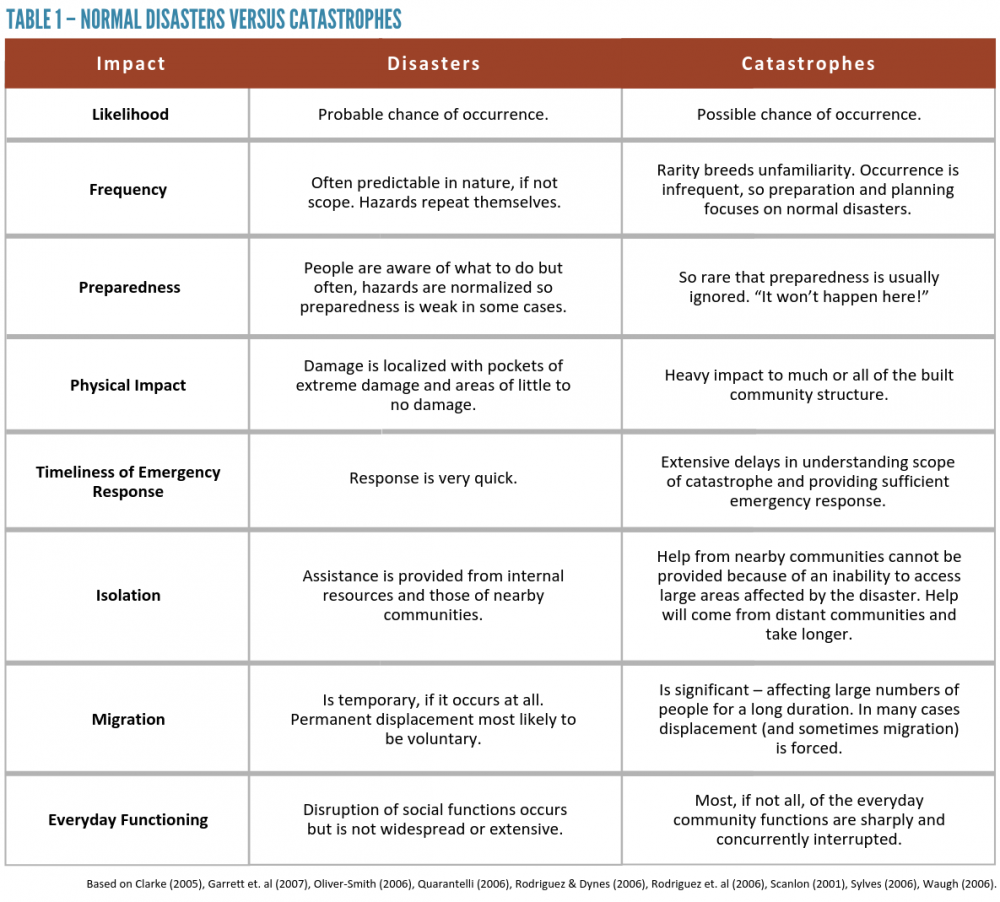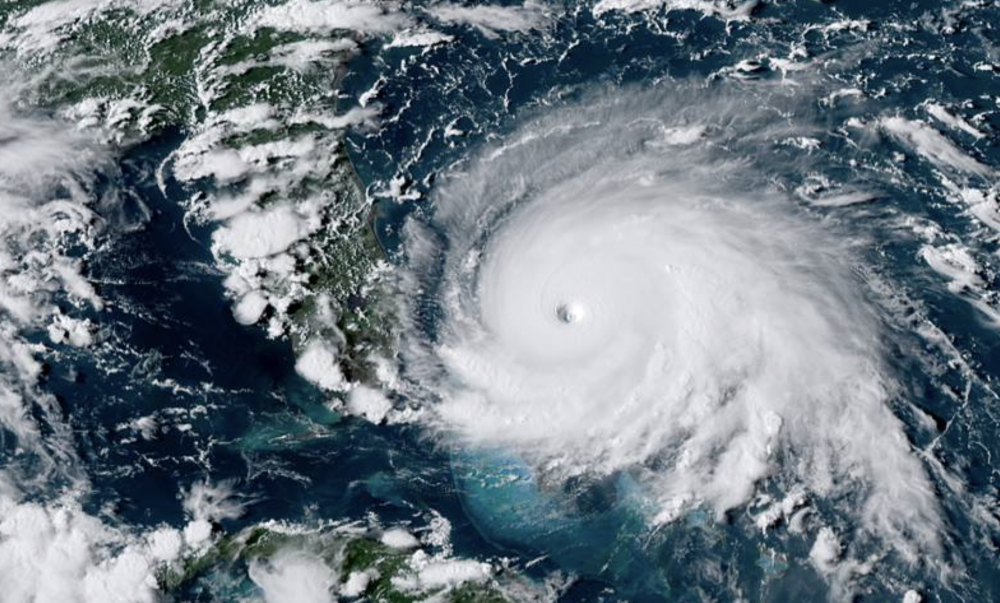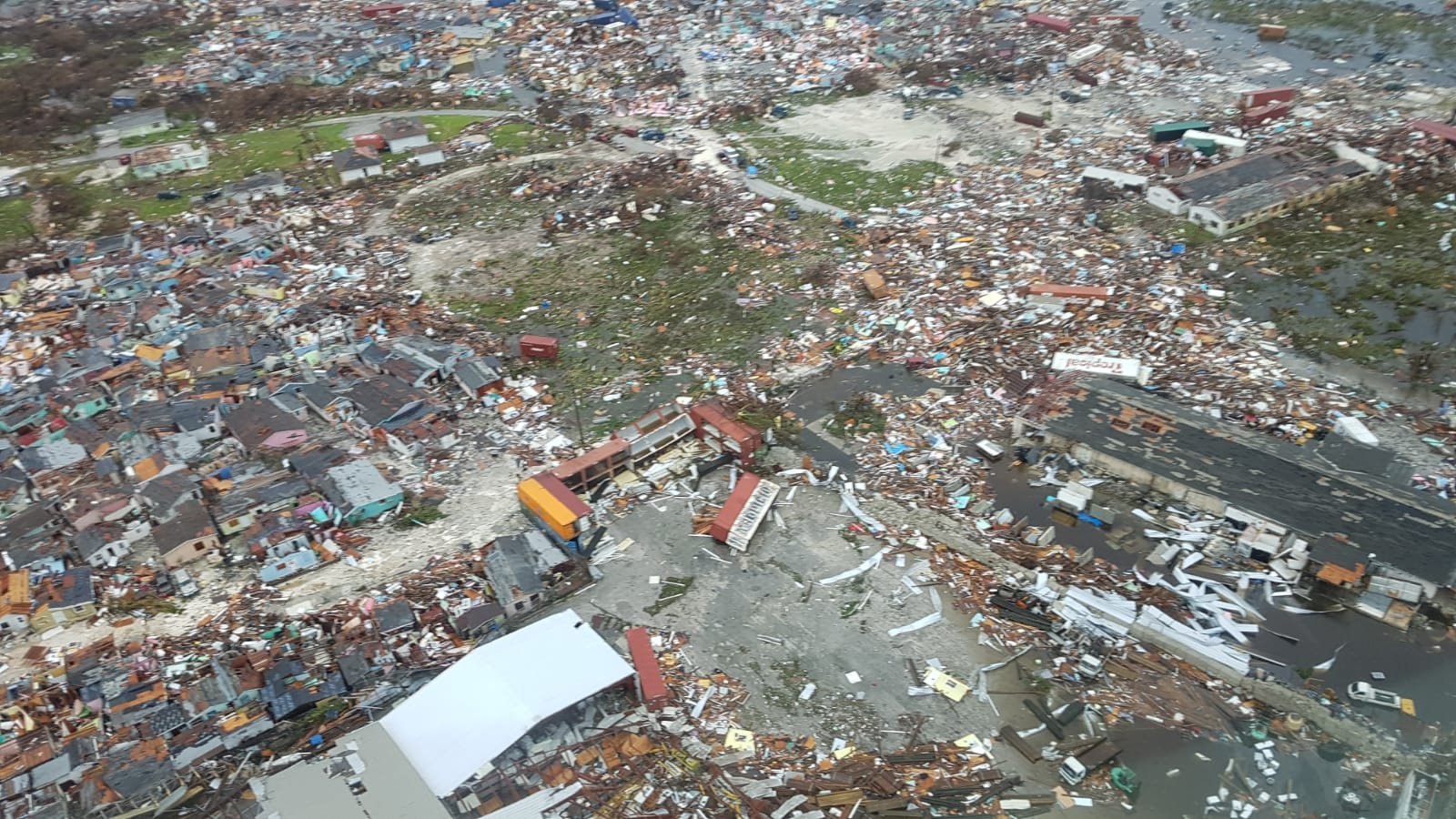Disasters versus Catastrophes: The Difference Matters

In the work that we do, disasters seem commonplace. They permeate our days and demand our focus. But what is a disaster and how does it differ from a catastrophe? Sometimes people use the words interchangeably, however there is a difference, both in scale and level of sustained support required to get to recovery.
“The word ‘disaster’ literally means the loss of a star, or the loss of your guiding light. Whether the disaster is large or small, intimate or collective, you don’t see it coming. It is, by definition, a shock, a surprise. The disasters knocks you off your axis, jolts you out of your normal orbit (Clark, 2005).
No matter the size of an accident or disaster, it surely feels like a catastrophe to the individuals affected. But catastrophe, as used by the Center for Disaster Philanthropy, references a specific type of disaster – one that is extremely large and is outside the coping ability of a community. The same hazard (fire, for example) could be an accident, disaster or catastrophe depending upon scale of impact. A single-family house fire is an accident or emergency; a fire that consumes a few city blocks is a disaster; and a wildfire that demolishes several communities, requiring mass evacuation and reconstruction is a catastrophe.
The fourth edition of FEMA’s National Response Framework says, “At the national level, a catastrophic incident is one of such extreme and remarkable severity or magnitude that the Nation’s collective capability to manage all response requirements would be overwhelmed, thereby posing potential threats to national security, national economic security, and/or the public health and safety of the Nation. By definition, a national catastrophic incident implies that the necessary resources are not available within expected timeframes for incident response. During a catastrophic incident, decision makers would be forced to consider the landscape of requirements and prioritize resources to manage shortfalls rather than to address all needs at once.”
CDP focuses its attention – through grantmaking, education and consulting – on catastrophic disasters while also monitoring large-scale disasters, or in the case of the Midwest Early Recovery Fund, low-attention disasters. Internally, we have a sense of the difference between a disaster and a catastrophe but there is not a pure and universal definition of this difference. Traditionally, the amount of damage and number of deaths were the best factors to determine scale. But, at the international level, housing construction, frequency of natural hazards and high-density populations often means a more significant level of damage than a similarly sized hazard in the U.S. might cause.
Similarly, as personal and community preparedness increase, the number of deaths is also no longer a good measurement of the scale of the disaster. Early warning systems and personal knowledge of what to do means people are often able to get themselves to safety thus preventing deaths. In other situations, the devastation means that the number of deaths is slow to be counted. For example, in the Bahamas, post-Dorian the death toll currently stands at 56 however 692 people are still on the missing list.
Several years ago for the book Savage Sand and Surf: The Hurricane Sandy Disaster, I created a chart to explain the difference between normal disasters and catastrophes. An abbreviated version is shared here.

Let us examine some of the components of the chart in the context of Hurricane Dorian. It is always probable that an Atlantic hurricane will hit the Bahamas, but it is rarely possible that it will be a Category 5 that stalls for 48 hours. Physically, the built infrastructure was devastated, especially in Abaco, parts of which were decimated by the storm. The isolation in the Bahamas was not so much about distance but geography. Islands that are accessible only by boat or plane become more isolated when docks and airports are not usable. Each of the categories on the chart can be similarly examined to see what makes Hurricane Dorian a catastrophe not a disaster.
Given the catastrophic nature of the storm’s impact on the islands, sustained and substantial funding is going to be required for years to come. Funders should think about how to give now to support relief and early recovery and how to plan to invest again in six months, a year or three years. Before anything can be done, the piles of debris must be removed and the basic infrastructure replaced – electricity, water, roads, telecommunications etc. In Marsh Harbour alone, it is estimated that there are two million cubic meters or about 1.5 billion pounds of debris. That is just one community on one island! Given the small population compared to some urban catastrophes, extensive external help will be needed. Residents of Abaco were mostly employed in service of tourism or of the wealthier residents on Grand Bahama. For them to recover, they are going to need temporary shelter near to their homes, assistance in rebuilding and employment.
When a disaster affects you, your friends or family and your community, we know that it will always feel like a catastrophe. But we hope this helps provide an understanding of the scope of a catastrophic disaster and why significant funding for recovery efforts is absolutely essential.
More like this

Hurricane Dorian: A Quick Guide for Funders

